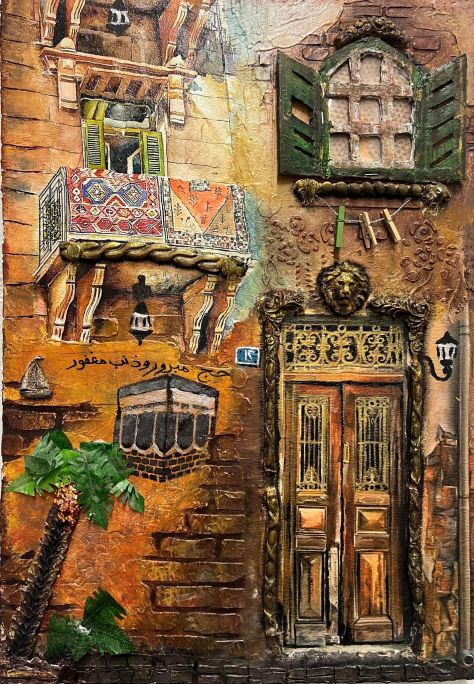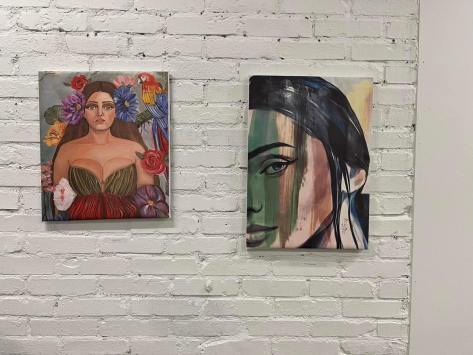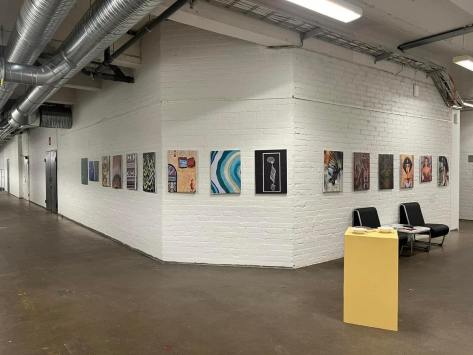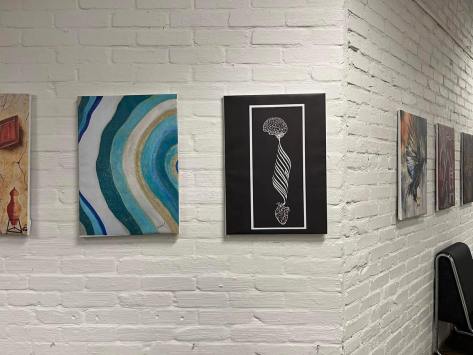Recently presented an exhibition in Helsinki under the title Arab Art Forum in Helsinki. The exhibition was held at Ioman Hall from the 20th to the 31st of March. The exhibition included more than thirty works of art in drawing by 35 artists from various Arab countries.
Start with the exhibits from the artist Ali Abdel Rahman, who painted Tutankhamun with a high technique, and after him, the artist Naglaa Ahmed, who painted an African woman using the technique of ancient methods, then Dalia Al-Mazen, who combined fire and roses in reference to burning beauty, and Abdullah Badri, who loves women, so he put On half of her face is a large red rose, and Pakinam Ahmed also drew a veiled woman rimmed with gold. As for Fathi Khamis, who painted the qibla at sunset, and Manal, who painted in an old style of Arabic calligraphy, as for Mays Salahia, she painted women in various shapes and situations, and Saleha Taj, who painted. A beautiful corner was occupied by Hanan Ebdellif, who painted ancient Egyptian objects with beautiful techniques and wrote the word Egypt on top of the painting, and Azza Ibrahim, who painted the ancient prose eye with a different technique in what I call righteous drawing.
Hoda Mukhtar, who painted Egyptian folklore or a scene that suggests that it is Egypt without a doubt, and Fadia Murshid, who painted in relief sculpture vocabulary from ancient Egypt, and Dalia Mukhtar, who also painted in relief painting aesthetics from ancient Egypt, as for Samar Samir, who preferred to have gold surrounding ancient Egypt. Her vocabulary is Egyptian-Pharaonic because she painted Nefertiti with distinction.
Abd al-Rahman Muhammad, who painted a seemingly peasant woman, decorated her with Arabic letters on the crown of her head, neck, and body. As for Tony Amjad, who sings of the eternal Nile, he painted a natural view of the Nile. Al-Batoul Taher al-Dabbagh also participated in an abstract work that suggests the sea. As for Reema Jan, she also participated in a work. And Magdy Hammad’s wide eye, and Samia Smeilan, who painted from the Bedouin heritage, and Maha Gamal El-Din, whose works varied between Arabic calligraphy and folklore drawing that might suggest Ramadan, and Magdy Jeddawi’s abstract work, I am the work of Saadi Al-Abdullah, who played with Arabic calligraphy and drawing as well. He wrote the word “There is no god but God” as he believed, between the mind and the heart.
And the artist Liloah, who also painted the bird with predatory claws in an abstract way, and the works of the artist Naglaa Muhammad, which ranged between surrealism in depicting a jello player or a tree playing sweets and sunflowers. As for Asmaa Maghrib, she painted an ancient Pharaonic form in a modern way, and Taghreed Al-Basri. Who painted the woman with all her pride and all her strength, and also Nadia Affan, who painted the sharp thrust of the woman, perhaps the Arab.




